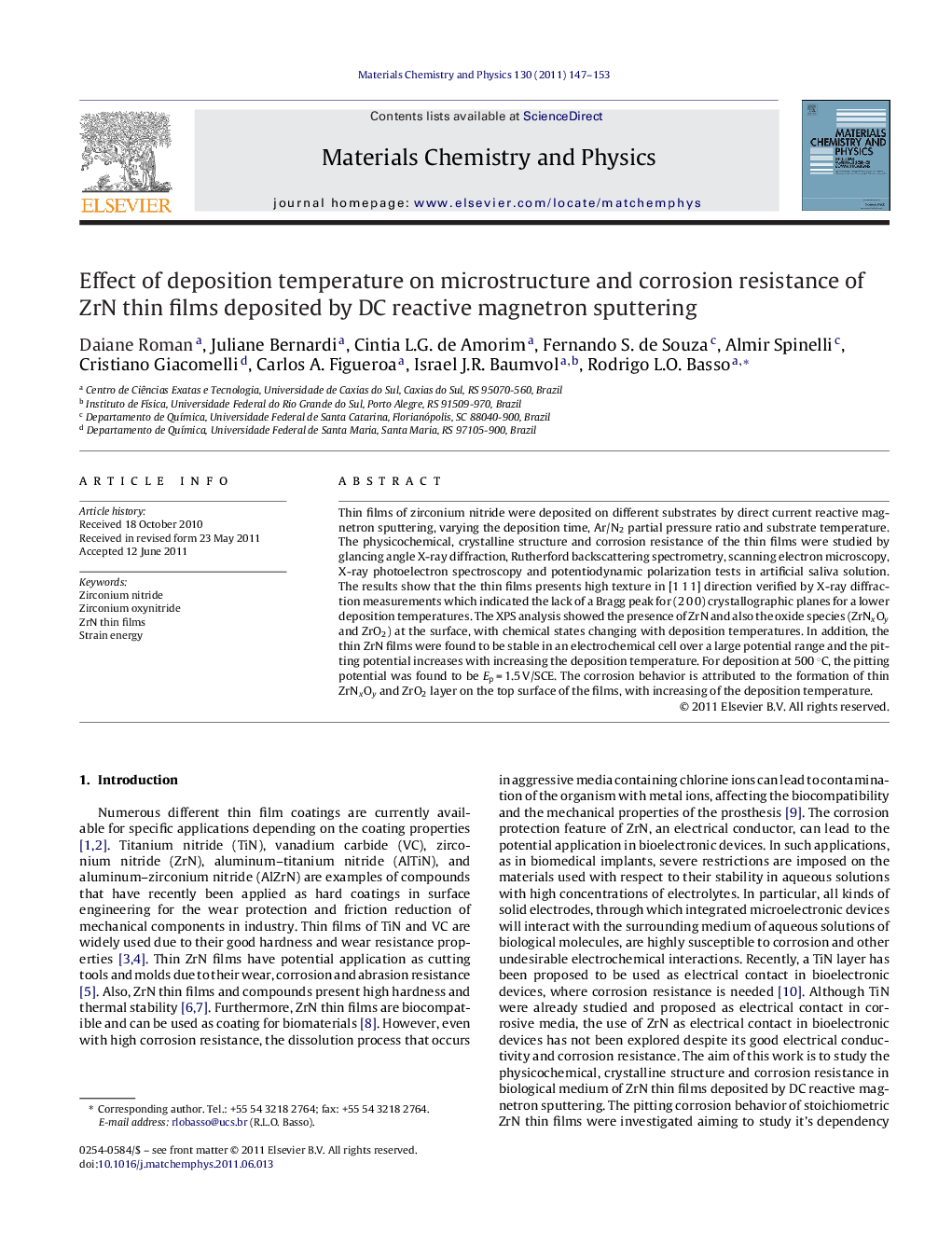| کد مقاله | کد نشریه | سال انتشار | مقاله انگلیسی | نسخه تمام متن |
|---|---|---|---|---|
| 1524279 | 1511831 | 2011 | 7 صفحه PDF | دانلود رایگان |

Thin films of zirconium nitride were deposited on different substrates by direct current reactive magnetron sputtering, varying the deposition time, Ar/N2 partial pressure ratio and substrate temperature. The physicochemical, crystalline structure and corrosion resistance of the thin films were studied by glancing angle X-ray diffraction, Rutherford backscattering spectrometry, scanning electron microscopy, X-ray photoelectron spectroscopy and potentiodynamic polarization tests in artificial saliva solution. The results show that the thin films presents high texture in [1 1 1] direction verified by X-ray diffraction measurements which indicated the lack of a Bragg peak for (2 0 0) crystallographic planes for a lower deposition temperatures. The XPS analysis showed the presence of ZrN and also the oxide species (ZrNxOy and ZrO2) at the surface, with chemical states changing with deposition temperatures. In addition, the thin ZrN films were found to be stable in an electrochemical cell over a large potential range and the pitting potential increases with increasing the deposition temperature. For deposition at 500 °C, the pitting potential was found to be Ep = 1.5 V/SCE. The corrosion behavior is attributed to the formation of thin ZrNxOy and ZrO2 layer on the top surface of the films, with increasing of the deposition temperature.
• Deposition conditions determine the thickness and microstructure of the ZrN films.
• For ZrN films relatively thin, the microstructure shows no preferred orientation.
• For ZrN film relatively thick, preferred orientation is in the (1 1 1) direction.
• Composition and microstructure controls the corrosion resistance of the ZrN films.
• The air exposure forms oxide and oxynitride layer promoting the corrosion resistance.
Journal: Materials Chemistry and Physics - Volume 130, Issues 1–2, 17 October 2011, Pages 147–153